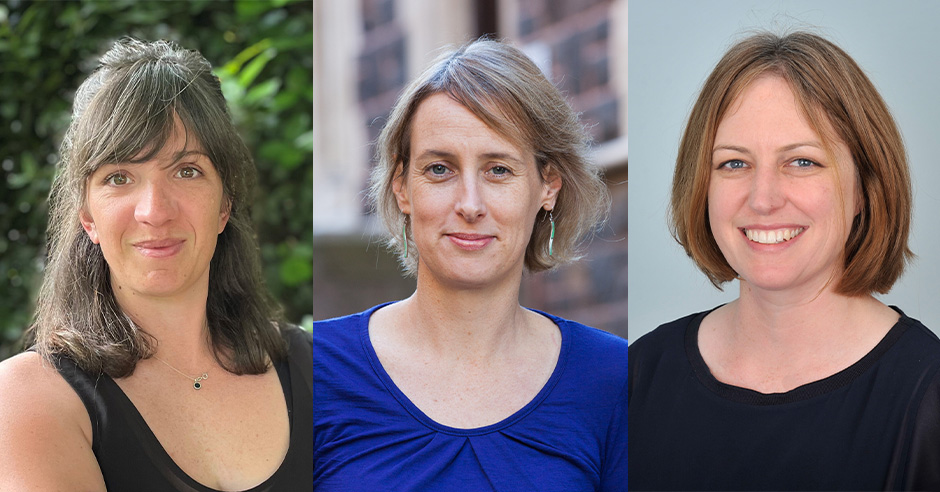
Three of Otago's 2023 Marsden grant recipients, from left: Dr Megan Leask, Associate Professor Bridgette Toy-Cronin, Dr Andrea Teng.
Established and emerging Otago researchers have won prestigious research funding to investigate questions of national and global significance, from how Māori and Pacific genetics influence immune responses, to whether unhealthy food taxes are effective.
Twenty-seven University of Otago researchers have been granted Royal Society of New Zealand Marsden Fund grants for 2023.
The grants, announced today, see Otago researchers awarded a total of almost $20 million.
Dr Andrea Teng from the Department of Public Health at the University of Otago, Wellington, has been awarded $653,000 to investigate the effects of Tonga’s world-leading, comprehensive taxation on unhealthy foods.
Across Moana-nui-a-Kiwa, the Pacific Ocean, Tonga demonstrates one of the highest rates of obesity in the world. However, it is also one of the few countries that has made significant progress on taxing unhealthy foods and beverages.
“Food taxes have been recommended to improve public health. Research on how well food taxes work, and how the costs and health benefits vary by household income, is really useful for decision makers considering action on the food environment,” Dr Teng says.
Along with her associate investigator Dr Viliami Puloka and Professor Nick Wilson, she hopes to discover strengths and learning points from Tonga’s policy and compare their research findings with other parts of the world.
“I’m so grateful that we can do this work to highlight the world-leading steps taken by Tonga on food taxes and understand how well they have worked. I hope our findings can support use here in Aotearoa to make some meaningful progress to improve our food environment,” she says.
Dr Megan Leask (Kāi Tahu/Kāti Māmoe), from the Department of Physiology, has been awarded a fast start grant to identify potential immune biomarkers from Māori and Pacific genetics that could be explored further for therapeutic interventions.
“We know that the immune response is hardwired by genetics, but to date there has been no research looking at the unique genetic contributors of Māori and Pacific people. This research is the start towards addressing this inequity in immune response research,” she says.
Her research results will contribute to capacity building in Māori and Pacific genetics.
“As an early career researcher who will be returning from the United States next year to start my new lab at Otago this grant gives me a huge boost. The grant has funds to support a wonderful postdoctoral researcher I have been working with and it will let me build my team so we can really get stuck into this work.”
Associate Professor Bridgette Toy-Cronin, from the Faculty of Law, has also been awarded a fast start grant to investigate the roles of non-lawyer advocates in New Zealand, which has a range of non-lawyer advisers operating in the justice system.
“These roles have been developed as a pragmatic solution to various problems in the system, including a lack of affordable representation,” she says.
“However, while that pragmatism is helpful for swiftly responding to issues, the piecemeal development means the country lacks a framework for thinking about the role of these advocates in social and constitutional arrangements, and the ethical principles that might govern their roles.
“I hope to be able to enrich the conversation about legal services in Aotearoa, and also contribute to the international conversation where non-lawyer advocates are increasingly seen as a possible solution to some of the access to justice problems that are common to many countries.”
Associate Professor Toy-Cronin says it is “humbling” to have the Royal Society’s support of the research.
“It means I can really dive deeply into the questions and have rich conversations with others, here and overseas, who are interested in these issues, so I’m very excited to get started.”
Deputy Vice-Chancellor Research and Enterprise Professor Richard Blaikie says these awards round out an outstanding year for success for Otago researchers in major national funding processes.
“The Marsden Fund is like the Olympic trials of research funding, where the best ideas from the best researchers across the nation are pitted against each other. Success is never guaranteed and is celebrated greatly by all involved.”
In addition to the funding success, the outcomes of the research are equally important, he says.
“By choosing the best of the best in these grants we know that many important findings will be delivered for communities across Aotearoa, the Pacific and the world – making the lives of people better in many ways.”
The successful projects went through a highly rigorous selection process, including substantial international peer review.
Nationally, 123 research projects were allocated more than $83 million in this round of Marsden grants.
Otago Marsden grant recipients
Standard grants
 Associate Professor Martin Fronius, Physiology
Associate Professor Martin Fronius, Physiology
TRPV channel heteromers have unique properties for the sensation of mechanical force
$941,000
The ability to detect mechanical forces is an ubiquitous feature of cells and relies on ion channels. The unique evidence identified new ion channels formed by two different TRPV (transient receptor potential vanillin) proteins. These new channels reply to force generated during cell swell. Such a response was not observed in channels formed by one protein alone.
The researchers will explore the unknown mechanism of how these hybrid channels operate. Channel activity will be measured in cells by electrophysiology and their co-localisation will be assessed by microscopy. Further, they will determine the function of TRPV channels in cells isolated from rat brains that experience changes of cell volume to release a hormone that contributes to blood pressure regulation. Results will reveal the existence of a new channel whose function is highly relevant for the regulation of blood pressure.
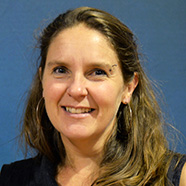 Professor Roslyn Kemp, Microbiology and Immunology
Professor Roslyn Kemp, Microbiology and Immunology
Tumor-derived WNT signalling reprograms T cell phenotype and function
$941,000
Co-Principal Investigator – Dr Kirsten Ward-Hartstonge
T cell populations have vast heterogeneity in phenotype and function, meaning they can support or inhibit tumor growth. New techniques studying multiple proteins on a single cell have allowed the identification of T cells with simultaneous regulatory and effector functions. These cells are enriched in tumours and are associated with good patient outcome. How are these cells recruited? How are they sustained within the tumour? The researchers propose that WNT , secreted by colorectal tumors, recruits and modulates the function of T cells. They will discover correlations between tumor-associated WNT and T cell phenotype and function: migration, survival and anti-tumor activity.
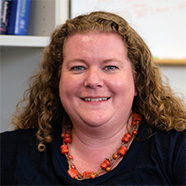 Associate Professor Louise Bicknell, Biochemistry
Associate Professor Louise Bicknell, Biochemistry
ORC3: A novel disease gene with a moonlighting role in brain development
$941,000
Biological complexity in higher organisms has been achieved in part by proteins taking on new moonlighting roles. While mutations in other ORC subunits cause a global reduction in growth, the team has discovered mutations in ORC3 in patients with a severe neurological disorder. Theyhypothesise that this clinical and genetic data has uncovered a moonlighting role for ORC3 in the brain, and they will explore this novel function using both in vitro and in vivo approaches. This project has the potential to define a novel disease gene and discover a novel moonlighting function for ORC3 in brain development.
Associate Professor Liz Ledgerwood, Biochemistry
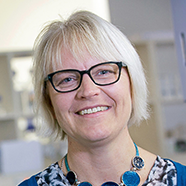 Probing functional protein oligomerisation in the crowded cellular environment
Probing functional protein oligomerisation in the crowded cellular environment
$933,000
A fundamental and widespread driver of protein functional diversity is oligomerisation. Within the crowded cellular environment, changes in oligomeric state will impact how proteins move, where they are localised, and what they interact with. However, most work on protein oligomerisation has used purified proteins, and we have little understanding of how these behaviours relate to function in living cells. By combining the use of live cell fluorescence fluctuation microscopy and oligomeric state-specific protein labelling the researchers will learn how oligomeric state controls function in the context of peroxiredoxins. Peroxiredoxins are proteins that are central to redox metabolism in all aerobic life forms, and switch between dimeric and ring-type decameric structures. As a prototypical example of the relationship between function and structural dynamics, this work will not only provide new insights into peroxiredoxin biology, but will also shed light more generally on whether oligomeric transitions identified in vitro predict in vivo behaviour of proteins.
 Dr Florian Beyer, Mathematics and Statistics
Dr Florian Beyer, Mathematics and Statistics
Nonlinear Partial Differential Equations of Wave Type: Singular Dynamics and Asymptotic Data
$712,000
The Principal Investigators have recently developed a robust theory to analyse the singular asymptotics of large classes of wave-type PDE s, so-called quasilinear hyperbolic Fuchsian PDE s. These techniques have displayed various advantages over other more traditional approaches. Consequentially, longstanding open questions in theory and applications have come into reach. From these existing results, Dr Beyer’s team now propose to derive a new methodology to analyse the singular asymptotics in terms of so-called asymptotic data. Of concern is their completeness (fully characterising the asymptotics), their dependence on the solution, and vice versa, the dependence of the solution on these data. This research will lead to a significantly more detailed description of the singular asymptotics than ever before and provide a measure for how much of the information about the solution is preserved in the singular limit. The team will also test their method using applications in general relativity – a rich source of very challenging singular PDE problems. Consequently they will not only obtain a new theory with a significantly enhanced reach and a much further range of application, but also groundbreaking new insights about the applications themselves, for instance, about the origin of our universe.
 Dr Nic Rawlence, Zoology
Dr Nic Rawlence, Zoology
Unlocking the past: a novel approach to quantifying biodiversity loss in the fossil record
$942,000
Accurately distinguishing between living and extinct species in the fossil record relies on the assumption that living species have changed little in the recent past. Preliminary data suggest this key assumption may often be violated, which could lead to overestimates of biodiversity loss and faunal turnover in the geological record across the tree of life. However, these two competing interpretations, and their relative frequency, cannot be distinguished based upon fossil data alone. Dr Rawlence and his teame will resolve this universal challenge by applying a novel geometric morphometric and genetic approach to contemporary and Holocene reptile specimens from New Zealand and New Caledonia.
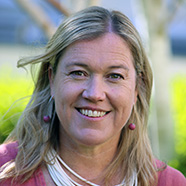 Associate Professor Deirdre Brown, Psychological Medicine
Associate Professor Deirdre Brown, Psychological Medicine
How adults talk to children about maltreatment: Identifying knowledge, gaps and challenges
$859,000
Adults who are concerned that a child may have been abused are faced with a challenging dilemma: how should they talk to the child in a way that supports the child’s well-being and also protects the accuracy of their memory? The New Zealand Supreme Court recently overturned a defendant’s multiple convictions of child abuse because of concerns that conversations parents had with their children compromised the children's testimony. There was no guidance available to parents about how to safely talk to their children about abuse then, and astonishingly there is still none today. To develop culturally sensitive and useful resources to support adults as they talk to children when there are concerns about abuse we need to know; 1) how parents and other adults would question children, 2) how capable and confident they feel about having such a conversation, 3) what resources would be useful to them, 4) where they would access information and support from, and 5) what they already know about the impact of different questions on children’s memory and well-being. The researchers will interview Māori and non-Māori caregivers, and teachers, about hypothetical child abuse suspicion scenarios to establish their knowledge, aspirations, concerns and need for support when talking to children about abuse.
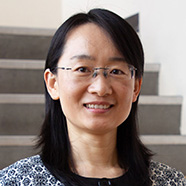 Associate Professor Ting Wang, Mathematics and Statistics
Associate Professor Ting Wang, Mathematics and Statistics
Modelling the domino effect in complex systems
$712,000
Co-Principal Investigator – Professor Boris Baeumer
Many complex systems, such as plate tectonics, financial markets or viral outbreaks show recurrence patterns of cause-and-effect. A major destabilising event (earthquake mainshock, market crash) triggers sequences of smaller events (aftershocks) until the system decays back to “steady state”. The recurrence of major destabilising events is not periodic, hence hindering accurate forecasting of impactful events at both short- and long-time scales. So far there has only been limited success in capturing the internal characteristics of such systems by point processes due to technical difficulties involved in modelling the unobserved dynamics (e.g. rock strength, economic forces) and estimating the parameters, hampering forecasting methods. The researchers propose to first model the system as a multivariate superposition of point processes and then develop a model for jointly forecasting event occurrence times and sizes. Novel occurrence rate functions – solutions to stochastic differential equations with memory – will provide a parsimonious platform that incorporates time- and event-size-correlation and physically meaningful non-linear feedback. They will build such models, developing novel statistical tools to estimate their parameters, and compare their performance against current models, starting with earthquake data. Better understanding and forecasting of these systems is vital to decisions such as building standards, and the like.
 Professor Rebecca Campbell, Physiology
Professor Rebecca Campbell, Physiology
GnRH neurons: Beyond fertility
$941,000
A small population of cells in the brain, known as gonadotropin-releasing hormone ( GnRH ) neurons, control reproduction in all mammals. However, new evidence supports a role for GnRH neurons that goes beyond fertility; it is becoming clear that GnRH neurons are also essential for higher brain function, including memory and cognition. How GnRH neurons regulate these seemingly distinct functions remains unknown. Professor Campbell’s team has recently identified that regional subpopulations of the diffusely distributed GnRH neurons exhibit divergent fibre projection patterns. We hypothesise, based on this preliminary evidence, that distinct subpopulations of GnRH neurons serve important functions in the brain beyond their classical role in fertility. They aim to harness and extend transgenic neuroscience tools to target and investigate projection-defined subgroups of GnRH neurons; for example, we will target only those GnRH neurons that send projections to specific limbic or cortical regions. Their proposed experiments will use sophisticated neuroscience approaches to anatomically, genetically and functionally define GnRH neuron subpopulations to identify their distinct and novel roles. Experimental outcomes have the potential to change the way we think about GnRH neurobiology.
 Dr Monica Tromp, Archaeology
Dr Monica Tromp, Archaeology
Reconnecting communities and cetaceans using mātauranga Māori and archaeological science
$870,000
The relationship between Oceanic peoples and cetaceans (whales and dolphins) is a sacred one that has persisted for centuries. These relationships are culturally significant and expressed in whakapapa (genealogies) and pūrākau (oral traditions). Despite this, very little is known about human interactions with cetaceans in the past in Aotearoa. Cetaceans include the largest animals on earth, but they are largely invisible in the archaeological record as their size prevents the transport of whole and/or diagnostic bones. Additionally, processes of colonialism have severed people from mātauranga ngā ika moana (Māori knowledge of whales). This research will use mātauranga Māori and the bimolecular methods ZooMS (zooarchaeology by mass spectrometry), and ancient DNA , to analyse archaeological taonga and bone fragments from unknown cetacean species. The development of minimally invasive or non-destructive sampling techniques allows us to use biomolecular methods to examine taonga in a culturally appropriate manner without causing visible damage to or affecting the mana of precious objects. The team of expert consultants from mana whenua, biomolecular archaeologists, museum specialists and marine conservationists will examine the changing relationship, use, abundance, and diversity of cetaceans from the first arrival of people to Aotearoa through to the present.
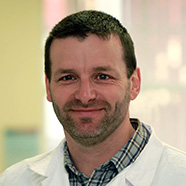 Professor Greg Anderson, Anatomy
Professor Greg Anderson, Anatomy
A neuronal circuit for stress-induced infertility
$942,000
Stress adversely impacts female fertility, but the mechanisms are poorly understood. Professor Anderson’s team has demonstrated that a population of brain cells called RFRP neurons are key players. They will characterise the neuronal circuitry whereby RFRP neurons link stress and reproduction, and determine how they interact with stress hormones and other neurons that govern reproduction. Transgenic mice will be used to visualise RFRP neuron activity in males and females, to determine if their function is modulated by estrogens, and to manipulate their communication with downstream targets to reveal their role in stress-induced infertility. The researchers will ‘knock out’ the receptors that the peptide secreted by RFRP neurons binds to on potential target cells (i.e. GnRH neurons, which govern reproductive function). They will also selectively modulate the neuronal activity of a specific subset of RFRP neurons that project to GnRH neurons, to reveal the neurocircuitry underlying stress-induced reproductive suppression. Understanding this circuitry may lead to development of clinically translatable protocols for ovulation induction in infertile women experiencing chronic stress. In the short-term, this will reveal how infertility is a biological consequence of chronic stress.
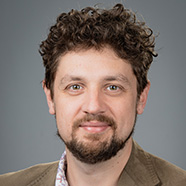 Dr Tilman Davies, Mathematics and Statistics
Dr Tilman Davies, Mathematics and Statistics
Principled inference for spatial point processes: a unified toolkit
$712,000
Research in many fields involves the study of spatial patterns of points, like locations of disease cases, animal nests, or archaeological finds. Statistical analysis of such data is always focused on answering questions around the spatial structure of the observed points. Is there evidence of clustering, or are points uniformly scattered in the study region? What extraneous variables affect the abundance of points? Do points arise independently per some overall trend, or do they correlate based on some unknown random mechanism? Current methods of inference for these kinds of fundamental questions see ad hoc solutions predominate. The lack of familiar, formal inferential tools is due to a confluence of factors related to analytically intractable properties of wide classes of spatial processes and unidentifiability of different sources of spatial variation. Recent breakthroughs in the study of models for such data provide a theoretical framework to address these shortcomings. This research programme will develop a new statistical toolkit, enabling rigorous testing of scientific hypotheses about spatial processes, defensible comparison of competing spatial models, and sound quantification of uncertainty in estimates of spatial parameters. The impact of these tools will be felt by researchers analysing real-world data in epidemiology, ecology, archaeology, and beyond.
 Dr Andrea Teng, Public Health, University of Otago, Wellington
Dr Andrea Teng, Public Health, University of Otago, Wellington
Taxes for a healthier diet? Impact of Tonga food excise taxes and tax subsidies introduced for non-communicable disease prevention
$653,000
Fiscal policies like taxes on unhealthy foods are recommended to improve public health, but our understanding of their actual real-world impact is limited. Questions remain about the extent to which consumers switch to other unhealthy foods, and whether health benefits and economic costs are equitable, e.g. for low-income households. As seen globally, the Pacific is facing a non-communicable disease crisis driven by globalisation and the availability of highly-processed energy-dense food. Tonga has responded with a range of substantive food taxes and tax exemptions introduced from 2013–2018. Bringing together Pacific health, nutrition, epidemiology, and econometrics expertise, Dr Teng’s team will investigate the effects of Tonga’s world-leading taxation programme on real-world outcomes, including food prices, import volumes, domestic manufacturing, household expenditure, and equity. They will use rigorous natural experiment methods, including interrupted time-series analysis and a controlled before-and-after study, underpinned by an analysis of policy and context. This project builds on the team’s track record of using natural experiment methods to evaluate the impact of sugary drinks taxes in Tonga and elsewhere in the Pacific, and the pre-existing collaborations, data access, expertise, and a proven publication record in leading nutrition journals. We seek to build Pacific research skills, including by involving a postgraduate student.
 Professor Debbie Hay, Pharmacology and Toxicology
Professor Debbie Hay, Pharmacology and Toxicology
Two CGRP-responsive receptors: “double trouble” in migraine?
$941,000
Co-Principal Investigator: Dr Michael Garelja
For millions of people worldwide, debilitating headaches cause impaired quality of life. New medicines that target a specific neuromodulatory system (the “ CGRP ” system) can interrupt migraine attacks but there are many unanswered questions about how they act, why some patients respond better than others to drug treatment and why some have unpleasant side effects. In this project, Professor Hay’s team will build on their discoveries so far to determine how two CGRP-responsive receptors could create “double trouble” in migraine by working together to cause migraine attacks, and thus whether “two is better than one” for future drug development.
 Professor Rachel Zajac, Psychology
Professor Rachel Zajac, Psychology
History in the Making: Memories for Historical Offences
$870,000
Courts around the world have seen a dramatic rise in adults alleging they were abused as children. Historical claims are exceedingly difficult to evaluate because in most cases the only evidence is the complainant’s memory – a memory that is often decades old. How do memories for historical childhood events differ from memories for contemporary ones? How do potential jurors evaluate historical claims of abuse? And how might investigators unwittingly “shape” these memories and the experiences of those who report them? Professor Zajac’s teams combined expertise in memory, clinical cognition, developmental science, and criminal justice makes it uniquely equipped to answer these crucial questions.
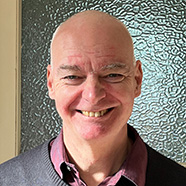 Professor Keith Gordon, Chemistry
Professor Keith Gordon, Chemistry
Hydrogen generation with sustainable resources – a combined molecular, computational and engineering approach
$941,000
Hydrogen is an important fuel source and commodity chemical used in a wide range of industrial processes. Unfortunately, almost all the hydrogen produced currently is obtained from the steam reforming process which is both energy intensive and generates carbon dioxide as a by-product. There are already several photocatalytic systems, including bimetallic metal complexes that can efficiently generate hydrogen in this way. However, the current technologies use Nobel metals which are expensive and rare. They will use earth abundant transition metals such as iron, cobalt and copper by re-designing the photocatalytic systems.
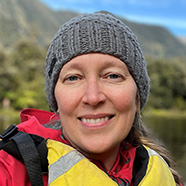 Dr Christina Riesselman, Geology and Marine Science
Dr Christina Riesselman, Geology and Marine Science
Flicking the master switch: Deconvolving warm-climate carbon cycle and cryosphere interactions in the Pacific sector of the Southern Ocean
$958,000
Currently there is a comprehensive lack of understanding of the mechanisms that cause vast areas of the subantarctic Southern Ocean to switch from carbon source to sink, which limits the ability to accurately model future atmospheric CO2 concentrations. Dr Riesselman’s team will identify the key ocean-atmosphere dynamics influencing the carbon switch during past warm climates of the last ~3 million years using a unique set of Southern Ocean sediment cores collected near the “oceanic pole of inaccessibility” that have unprecedented chronological accuracy, resolution and continuity. Using well-established and emerging biological and geochemical marine sediment proxies, we will reconstruct sea surface conditions, frontal migration and the efficiency of primary productivity, variables that both drive and respond to changes in climate, circulation, and the cryosphere. The access to sample material, high-fidelity proxies and team expertise provides an opportunity to develop well-dated, continuous records of ACC dynamics on a variety of timescales that are relevant to projected future climate change. The results of this proposed research will have wide-ranging significance for our understanding of the Southern Ocean carbon sink and the potential range of physical and biological responses to predicted climate change, and should provide valuable constraints for future climate sensitivity modelling efforts.
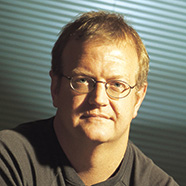 Professor Dave Grattan, Anatomy
Professor Dave Grattan, Anatomy
Pregnancy hormones modify synchrony of neuronal activity within a defined neuronal circuit
$941,000
The aim of this study is to investigate how hormones modify activity of a defined neuronal network during pregnancy and lactation. Hypothalamic dopamine neurons that control secretion of the anterior pituitary hormone, prolactin, switch from being highly synchronised in non-pregnant animals to being irregular and disorganised in lactation. This switch is likely critical to change the output of these neurons and enable the high levels of prolactin secretion required for milk production in lactation. Until now, this phenomenon has been investigated in acute brain slices from single timepoints, and we do not know when this switch occurs or what is driving it. Using genetically encoded calcium sensors in transgenic rats and in vivo fibre photometry, we now have the opportunity to observe the patterns of activity of these neurons in conscious animals in real time, and observe as they change in response to the hormonal changes associated with pregnancy, lactation and weaning. Professor Grattan’s team will then manipulate hormone levels in pregnant or non-pregnant rats to observe the effects on the pattern of firing. This longitudinal approach gives unprecedented opportunity to determine the hormonal mechanisms driving this remarkable plasticity of a neuronal network.
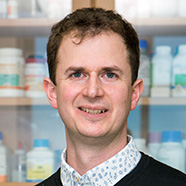 Dr Simon Jackson, Microbiology and Immunology
Dr Simon Jackson, Microbiology and Immunology
Understanding bacteriophage-pathogen specificity to support phage therapy
$941,000
The use of bacterial viruses (phages) is an emerging approach to treat antimicrobial-resistant bacterial infections, termed phage therapy. A major challenge for phage therapy is that closely related bacteria can differ vastly in their phage susceptibility profiles – highlighted by several recent clinical applications of phages that required screening thousands of phage candidates. Our research aims to understand the genetic basis for phage-bacteria specificity, focusing on immune systems that bacteria use to protect themselves from phages infections. Using new high-throughput genetic screens, Dr Jackson’s team will uncover how phages have evolved anti-immune proteins to evade or inactivate bacterial immunity. We will then discover which bacterial immune systems have evolved to counteract phage anti-immune proteins. Knowledge gained in this research will directly support future genomics-based approaches to developing phage-based therapies for bacterial infections.
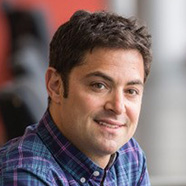 Professor Ben Schonthal, Religion
Professor Ben Schonthal, Religion
Mapping Buddhist Law in Asia
$660,000
Despite decades of scholarship documenting the influences of Christian law on Western legal culture, scholars have ignored the major influences of Buddhist law on legal cultures in Asia. This project addresses this significant gap in knowledge by producing the first comprehensive account of Buddhist law as a complex transhistorical, transregional legal tradition. Using a combination of database, textual and ethnographic methods, this project will yield crucial new knowledge about a tradition of law that has shaped human societies across one-fifth of the globe, while also building the expertise and scholarly networks necessary for advancing future research on this neglected topic.
Fast Start Grants – $360,000
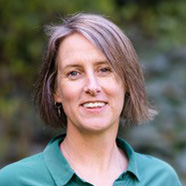 Associate Professor Bridgette Toy-Cronin, Law
Associate Professor Bridgette Toy-Cronin, Law
What Roles and Responsibilities for Aotearoa’s Non-Lawyer Advocates
Non-lawyer advocates are stepping in to meet the legal needs of the many people who cannot afford a lawyer and do not qualify for legal aid. Non-lawyer advocates assist people across a range of cases but are unregulated in Aotearoa. This study asks questions about the role non-lawyers advocates should perform within our justice system. If their role is regulated, what should it be and how might it differ from that of a lawyer. Using theoretical analysis and qualitative interviews (with non-lawyer advocates), the resulting articles will inform both national and international conversations on contemporary delivery of legal services.
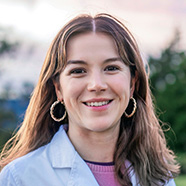 Dr Teodora Georgescu, Anatomy
Dr Teodora Georgescu, Anatomy
Prolactin-mediated suppression of fever during pregnancy
During pregnancy, the suppression of the fever response is a crucial adaptation that safeguards the developing foetus from potentially harmful elevated maternal body temperature. A recent study has pinpointed that specific neurons in the ventral medial preoptic area ( VMPO ) are responsible for mediating fever responses. These cells also express receptors for the pregnancy hormones, prolactin and oestrogen. Building on this study, Dr Georgescu hypothesises that elevated levels of hormones during pregnancy act on these neurons to mediate the suppression of the fever response observed during late pregnancy. To investigate this, Dr Georgescu will first record the activity of fever-activated VMPO neurons in conscious pregnant animals via state-of-the-art fibre photometry. To determine whether hormonal action on these fever-responsive neurons is required for the loss of fever during pregnancy, Dr Georgescu will use a conditional knockout approach to delete the genes for the prolactin and oestrogen receptors, respectively, from fever-responsive neurons. Understanding the mechanism behind the loss of fever responses during pregnancy has significant implications for maternal and foetal health. It may shed light on the adaptive changes that occur during pregnancy and provide insights into potential interventions for managing infection symptoms using hormones.
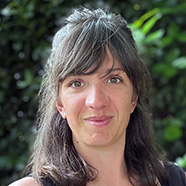 Dr Megan Leask, Physiology
Dr Megan Leask, Physiology
Omics led discovery and in vivo screening of Māori and Pacific immune variation
The human immune system is incredibly diverse and subject to recent population-specific adaptation, yet what we have learnt so far about genetic regulation of immune biology has been restricted to European based datasets. Expanding genetic analyses to Māori and Pacific peoples presents a significant opportunity to: 1. understand novel immune mechanisms in these populations, and 2. address a critical issue in genetics research – inequity of participation of minority populations. Leveraging substantial 'omics data from Māori and Pacific peoples and a world-first quantitative in vivo enhancer assay, Dr Leask will screen and functionally test a panel of population-specific genetic variants for immune activity. The outcomes of this project will provide mechanistic proof that associated Māori and Pacific variants, genes and metabolites are causal in inflammatory conditions, revealing biology that can immediately proceed to drug development.
The information gained here in this research will also be incorporated into the Genomics Aotearoa projects Rakeiora and Variome, critical to the implementation of genomic based medicine into the healthcare system of Aotearoa. This research will contribute to capacity building in Māori and Pacific genetics and is the step change required for equitable access to precision medicine in Aotearoa.
 Dr Elinor Chisholm, Public Health, University of Otago, Wellington
Dr Elinor Chisholm, Public Health, University of Otago, Wellington
Making a home in employer-provided housing
Across the world, people in a broad range of professions live in housing provided by their employers. Yet little is known about life in employer-provided housing. This project will draw on theories of power to investigate how a single relationship that secures both housing and employment affects experiences of home, and analyse differences over time and between different sectors of workers. Through key informant interviews, statistical analysis of government data, photovoice interviews with worker-tenants, and archival research, the research will advance understanding of how we understand and value “home” and how power operates in daily life.
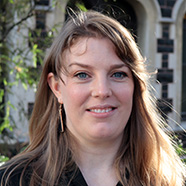 Dr Susie Warring, Microbiology and Immunology
Dr Susie Warring, Microbiology and Immunology
Determination of the molecular mechanisms underpinning bacteriophage hitchhiking
Bacteriophages play a critical role in the environment, shaping microbial communities through predation and horizontal gene transfer. Understanding phage transport is critical for successful phage application in response to the antibiotic resistance crisis. The recent paradigm shift that phages are transported by motile non-host bacteria to distant niches raises important questions, specifically, what phage traits govern hitchhiking success. The proposed work will systematically study adsorption of phages to non-host bacteria and their hitchhiking efficacy to reveal phage properties critical to hitchhiking. Understanding the molecular mechanisms underpinning hitchhiking will allow its utilisation as a delivery mechanism in medical and agricultural applications.
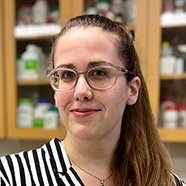 Dr Leah Smith, Microbiology and Immunology
Dr Leah Smith, Microbiology and Immunology
The influence of bacterial dormancy – Uncovering factors that affect phage-biofilm interactions
Viruses that infect bacteria (phages) represent a potential strategy towards combating antibiotic-resistant infections. However, a greater understanding of fundamental phage-bacterial interactions is needed to inform on applied therapies. In both nature and clinical settings, bacteria predominantly exist as biofilm aggregations where cell metabolism ranges from active to dormant. Most phage characterization has been performed using metabolically active bacteria, ignoring the complexity of the biofilm state. Dr Smith will use directed evolution and sequencing to identify phage factors that facilitate dormant cell infection and assess phage-biofilm interactions using single-cell analyses. This research will guide selection of phage characteristics to improve therapeutic outcomes.
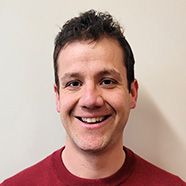 Dr Ludovic Dutoit, Zoology
Dr Ludovic Dutoit, Zoology
Harnessing the power of hybrids to resolve the role of gene expression in evolution
Understanding the way organisms adapt to change is a fundamental goal of biology. Genetic changes happen at two levels: in the underlying DNA code of proteins or in the DNA code that regulates how much of a given protein is produced. Knowledge of this regulation process is limited. Dr Dutoit’s team will use hybrids of two species of New Zealand short-horned grasshopper and game-changing genomic approaches to disentangle the relative role of the different regulatory elements. Their study is well-placed to revolutionise the understanding of gene-expression evolution, improving the way we understand biological adaptation in our changing world.
For more information, please contact:
Lydia Anderson
Communications Adviser, Media Engagement
University of Otago
Mob +64 21 279 4728
Email lydia.anderson@otago.ac.nz
